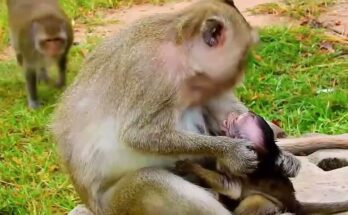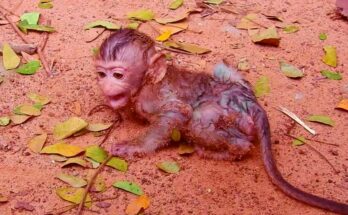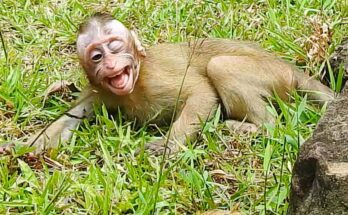The scene is both chaotic and heartbreaking: a selfish monkey, too absorbed in her own mischief, has dragged her helpless baby brother into a muddy sinkhole. The thick, dark mud clings to their fur, pulling them deeper with every small movement. The little brother, innocent and fragile, squeals in fear as he struggles to free himself, his tiny arms flailing for help. His big sister, however, doesn’t seem to understand the danger. She tugs at him playfully, thinking only of her own amusement, not realizing that her actions are causing him distress and putting his life at risk.
The muddy sinkhole is sticky and deceptive, swallowing their small bodies bit by bit. The baby monkey’s wide eyes are filled with panic as he tries to escape, his tiny cries echoing through the forest. Around them, the sounds of nature continue—birds chirping, leaves rustling—yet no one seems to hear his desperate pleas. The selfish sister remains stubborn, too focused on her game, pulling and dragging instead of helping.
It’s a moment that shows how innocence can be endangered by recklessness. The older monkey should have been protecting her younger brother, guiding him safely through the forest. Instead, her careless behavior has turned into a dangerous trap. The baby monkey’s soft whimpers and trembling body are a plea for rescue. He cannot free himself from the mud’s heavy grip, and time is running out.
This scene is a call for compassion and responsibility. The baby monkey, undeserving of such suffering, needs someone to step in and save him from the sinkhole. His survival depends on kindness and quick action. Will he be left to sink deeper, or will someone intervene before it’s too late?


